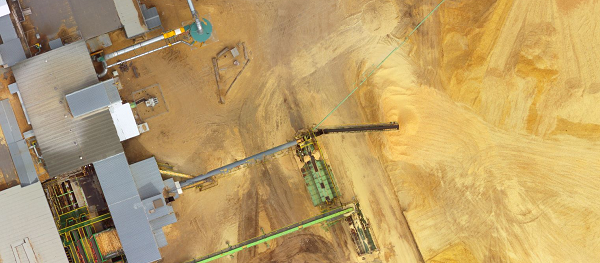Innovation
Canfor is driving performance improvements through innovation across all of our operations.
Our Canadian operations are increasing the use of LiDAR (Light Detection and Ranging) to acquire more precise and reliable information about the forests we manage. LiDAR is an active remote sensing technology that can be used to provide information about tree stand attributes such as height and volume. We have been using the technology in hard-to-reach areas of BC and Alberta for more than a decade. Reductions in acquisition, storage and processing costs, combined with advancements in the quality, expertise and products derived from LiDAR have resulted in the ability to deploy this game-changing technology into more of our operations. It changes the way we do business by reducing costs of fieldwork, harvesting and roadbuilding while improving our environmental assessment process and the ability to better predict profile of products to our customers.
We have begun to introduce best-in-class maintenance systems for our Canadian sawmills to achieve significant financial benefits. These were developed by a steering committee, and will provide maintenance staff with the necessary information, training and processes to achieve best-in-class performance. We trained front-line managers in 2016, and will train maintenance planners, accountants and purchasers in 2017.
After a test of a new wheel loader at our Plateau Sawmill in Vanderhoof, BC, showed impressive fuel savings, we ordered two more machines for our Houston, BC, mill. As well as the financial and environmental benefits, the equipment has reduced maintenance requirements. We are also ensuring that any rebuilt equipment has ProductLink, a remote monitoring system that provides detailed performance information so we can improve efficiency and reduce costs.
We are a North American leader in using new winch assist systems instead of cable logging for safer and more efficient access to hard-to-reach timber on steep slopes. Most logging equipment is stable on slopes up to 35% but may become more prone to rollover on steeper slopes, which account for about a fifth of our annual cut. The winch assist system is attached to either the working machine or a separate machine, and is synchronized with the transmission so it applies a constant tension on the cable. This keeps tracks of the machine on the ground. We currently have seven different systems in use in our Prince George, Chetwynd, Vavenby and the Kootenays operations, and expect to double our capacity by 2020.
We are a leader in using drone photogrammetry mapping to improve fibre recovery and utilization. In 2015, we gathered mapping data for 10 sites in BC, generating a comprehensive and detailed mapping archive for our manufacturing operations. The two- and three-dimensional volumetric information for accumulated woody debris is critical in building effective residual management plans for each operation.
This mapping data is shared internally, and supports improvements in safety plans, emissions control, logistics and other management areas. Our Elko, BC, mill reported that drone imagery was used to determine the current state of the lumber yard and make improvements more efficiently.
Woody debris accumulations were quantified by aerial drone photography at two additional BC sites in 2016, and characterized as to composition of material by site personnel. Four sawmills made substantial progress in processing and utilizing accumulated materials.
 Detailed 2D map showing overhead view.
Detailed 2D map showing overhead view.

3D rendered map allowing the visualization of biomass.

3D rendered map with a different perspective. The use of drone photography was recommended by our Wood Residue Working Group, which was created to find sustainable solutions to historical and ongoing accumulations of woody debris at our sawmill sites.
We utilized high-capacity log yard debris and screening systems at our Prince George, Chetwynd and Houston sawmills in 2016 to separate debris into usable bark, rock and mineral matter and fines products and reduce landfill quantities. At our Mackenzie operation we used a grinding and separation system to generate usable hog fuel and separate out metal from woody debris. We will continue to consider these options for ongoing logyard debris management.